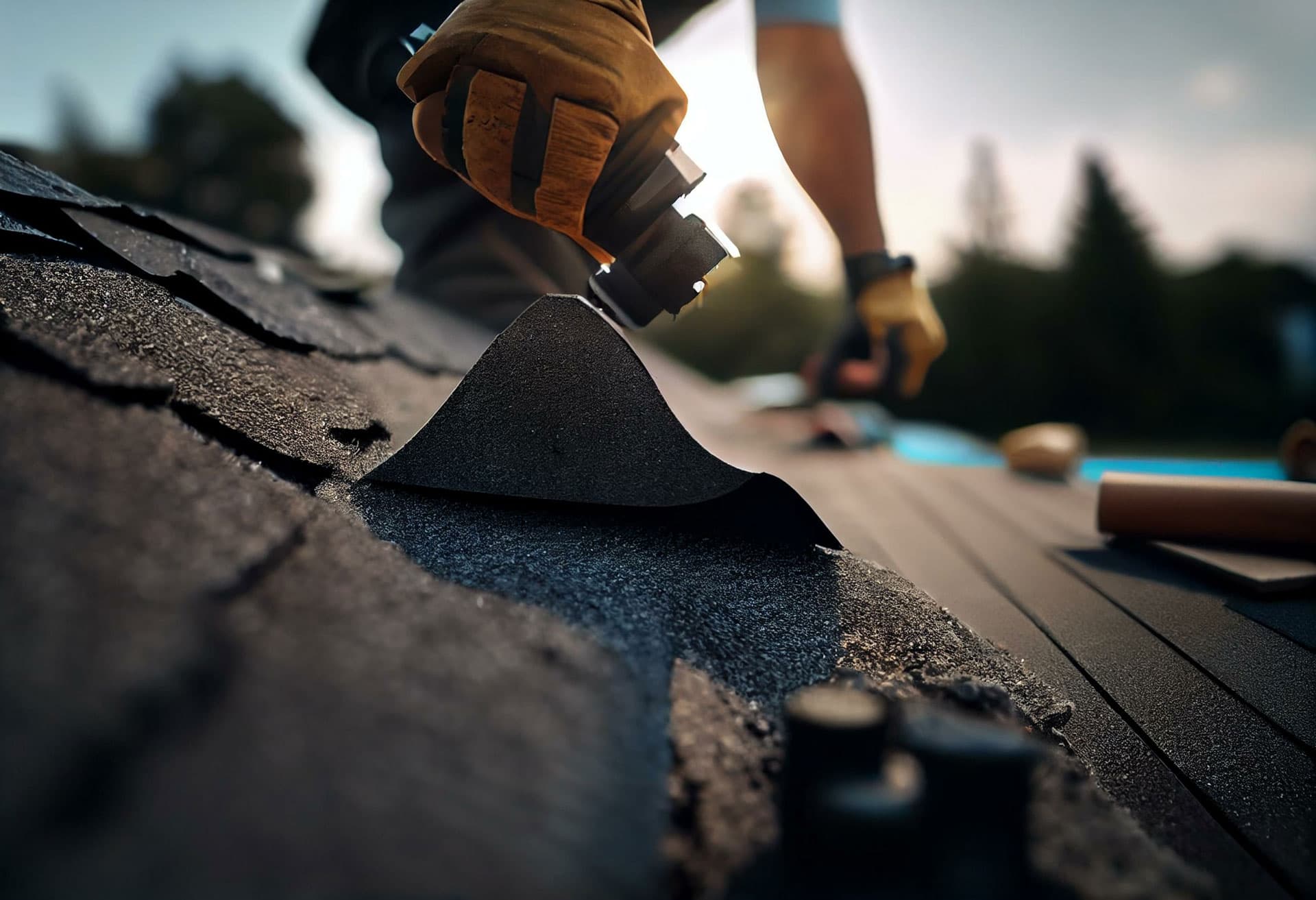Residential roofing is a crucial component of any home, serving not only as a physical barrier against the elements but also as a significant contributor to a home’s overall aesthetic appeal. It encompasses the process of selecting, installing, and maintaining the roofing materials and structures on a residential property. The importance of residential roofing cannot be overstated. It provides the first line of defense against weather elements and significantly affects a home’s energy efficiency and comfort.
Choosing the right roofing material is vital in residential roofing. The material you select can dramatically impact the longevity, durability, and appearance of your roof. Not all roofing materials are created equal. Some are more susceptible to wind damage, while others are more inclined to resist fire. Some materials require more maintenance than others, and the cost of roofing materials can vary widely. Therefore, homeowners must carefully consider their specific needs, budget, and the environmental conditions in their area when choosing roofing materials.
Furthermore, the right roofing material can enhance the architectural style of your home and increase its curb appeal. From the traditional charm of wooden shingles to the sleek modernity of metal roofs, the variety of roofing materials available today allows homeowners to customize their homes to their liking. Additionally, the right roofing material can significantly increase a property’s resale value, making it a vital consideration for homeowners planning to sell in the future.
Types of Residential Roofing Materials
Asphalt Shingles
In the world of residential roofing, there is a plethora of material options available, each with its own set of benefits and drawbacks. To begin with, asphalt shingles are the most common and affordable roofing material. They are versatile, easy to install, and come in a wide range of colors. However, they may not last as long as other materials and may not be suitable for extreme weather conditions.
Metal Roofing
Moving on, metal roofing is a durable and environmentally friendly choice. It’s highly resistant to adverse weather, can last up to 70 years, and is 100% recyclable at the end of its life. On the downside, it can be quite expensive and may not suit all architectural styles.
Wooden Shingles or Shakes
Wooden shingles or shakes offer a natural and rustic aesthetic that can make any home stand out. They are energy-efficient and can last up to 30 years if properly maintained. However, they are more susceptible to fire, moisture, and insects.
Tile Roofing
Tile roofing is another popular choice, especially for homes with a Mediterranean or Spanish architectural style. These roofs are extremely durable, fire-resistant, and can last up to 100 years. However, they are heavy and may require additional structural support.
Slate Roofing
Slate roofing is one of the most durable roofing materials, lasting up to 150 years. It’s fire-resistant and requires little maintenance. However, it’s one of the most expensive roofing materials and also requires a strong foundation due to its weight.
Concrete Roofing
Concrete roofing is a cost-effective and durable option. It’s resistant to fire, wind, and hail, and can mimic the appearance of other materials like wood or slate. However, like tile and slate, it’s heavy and may require additional structural support.
Green Roofing
Green roofing is a sustainable choice that offers insulation, reduces stormwater runoff, and provides a habitat for wildlife. However, it requires a strong structure to support the weight of the soil and plants and needs regular maintenance.
Solar Tiles
Lastly, solar tiles are an innovative choice for those seeking energy efficiency. They generate electricity while offering the same protection as regular tiles. However, they are expensive and may not be cost-effective in areas with less sun exposure.
Factors to Consider When Choosing Roofing Materials
Weather and Climate Conditions in Your Area
When choosing residential roofing materials, several critical factors must be considered. The first is the prevailing weather and climate conditions in your area. For instance, metal roofing, slate, and tile are excellent choices for regions with harsh weather conditions due to their durability and resistance to elements. Conversely, wooden shingles or shakes are better suited for areas with milder climates due to their natural insulation properties.
The Pitch and Structure of Your Roof
The second factor is the pitch and structure of your roof. Certain materials like tile and slate are heavy and may require additional structural support. If your roof has a steep pitch, it might not be suitable for heavier materials, and you might have to opt for lighter options like asphalt shingles or metal roofing.
The Style of Your House and any Neighborhood Regulations
The style of your house and any neighborhood regulations can also influence the choice of roofing material. For example, tile and slate can add a touch of elegance and enhance the Mediterranean or French country style of your home. However, some neighborhood associations might have strict regulations on the type of roofing materials to maintain a cohesive aesthetic appeal in the community.
Budget and Cost-Effectiveness
Budget and cost-effectiveness are other key factors. While asphalt shingles are a popular choice due to their affordability and ease of installation, they have a shorter lifespan compared to other materials. On the other hand, options like slate and metal roofing have a higher upfront cost but offer long-term cost-effectiveness due to their durability and low maintenance needs.
Durability and Lifespan
Durability and lifespan are also essential considerations. Metal roofing, slate, and tile can last several decades, with proper maintenance. In contrast, asphalt shingles and wooden shakes have a shorter lifespan and require more frequent replacement.
Consider the Environmental Impact
Lastly, consider the environmental impact of your choice. Green roofing and solar tiles, for instance, are environmentally friendly choices that can also help reduce your energy bills. Always consider materials that are recyclable or have a lower carbon footprint to contribute to environmental sustainability.
Pros and Cons of Different Roofing Materials
Asphalt Shingles
Asphalt shingles, a widely used roofing material, offer a balance of affordability and longevity. They are relatively easy to install and come in a variety of colors to match any home aesthetic. However, they are less durable than other materials and can be prone to damage in extreme weather.
Metal Roofing
Metal roofing, on the other hand, boasts impressive durability and longevity, often exceeding 50 years. It also reflects solar radiant heat, which can reduce cooling costs. However, the initial cost of metal roofing is higher than other materials, and it can be noisy during rainstorms.
Wooden Shingles or Shakes
Wooden shingles or shakes offer natural beauty and durability, with a lifespan of 30 to 50 years if properly maintained. They provide excellent insulation but are relatively high in cost and require regular maintenance to prevent rot and insect damage.
Tile Roofing
Tile roofing is a durable and environmentally friendly option. Tiles are available in clay or concrete, and they offer a unique aesthetic appeal. However, they are heavy, requiring a solid roof structure, and can be costly to install and repair.
Slate Roofing
Slate roofing is known for its natural beauty, fire resistance, and durability. A slate roof can last over 100 years if well-maintained. However, it’s one of the most expensive roofing materials and requires a robust structure due to its weight.
Concrete Roofing
Concrete roofing is durable, fireproof, and offers a range of styles and colors. It’s a cost-effective alternative to clay or slate roofing. However, like tile and slate, it is heavy and requires a substantial roof structure.
Green Roofing
Green roofing, or living roofs, feature a layer of vegetation and provide excellent insulation, reducing energy costs. They also contribute to local biodiversity. However, they require regular maintenance and a robust roof structure to support the added weight.
Solar Tiles
Lastly, solar tiles are an innovative roofing material that can generate solar power for your home while offering the same protection as regular tiles. They are more aesthetically pleasing than traditional solar panels but are also more expensive.
Maintenance and Lifespan of Various Roofing Materials
Following the selection of your preferred residential roofing material, understanding its maintenance routine and lifespan is paramount. Each material has unique care requirements and durability that can greatly influence its overall performance.
Asphalt Shingles
Asphalt shingles, popular due to their affordability and versatility, require regular maintenance. This includes routine cleaning to prevent moss and algae growth, as well as regular inspections to replace damaged or missing shingles. With proper care, asphalt shingles can last up to 20 years.
Metal Roofing
Metal roofing, on the other hand, is known for its durability and energy efficiency. It requires less frequent maintenance, often only needing a periodic wash to remove dirt and debris. When properly installed and maintained, metal roofing can last anywhere from 40 to 70 years.
Wooden Shingles or Shakes
Wooden shingles or shakes, famed for their natural beauty, require a more rigorous maintenance routine. Regular cleaning, staining, and treatment for pests and moisture are necessary. With this level of care, wooden shingles can last up to 30 years.
Tile Roofing
Tile roofing, known for its sturdiness and unique aesthetic, requires minimal maintenance. However, it’s crucial to replace cracked or broken tiles promptly. With proper care, tile roofing can last over 50 years. The luxurious slate is incredibly durable, requiring less maintenance. But it’s important to address any chipping or shifting promptly.
Slate and Concrete Roofs
Slate roofs can last for more than 100 years with proper upkeep. Concrete roofing, a cost-effective option, requires periodic sealing to prevent water absorption and damage. With good maintenance, concrete roofs can last up to 50 years.
Green Roofing and Solar Tiles
Green roofing, while eco-friendly, requires meticulous maintenance including irrigation, fertilization, and weed control. With proper care, green roofs can last up to 40 years. Lastly, solar tiles, an innovative roofing solution, require cleaning to ensure maximum light absorption. With adequate maintenance, solar tiles can last up to 30 years.
Conclusion
In conclusion, the selection of the most appropriate residential roofing material is a decision that should not be taken lightly. The right choice can drastically impact the longevity of your roof, the amount of maintenance required, and ultimately, the overall look and value of your home. As we’ve explored throughout this article, each material has its own unique set of benefits and drawbacks, from the durability of metal roofing to the environmental benefits of green roofs. Therefore, your final decision should be based on a variety of factors, including your budget, the climate and weather conditions in your area, and your personal aesthetic preferences.
The role of a professional roofing contractor in this process cannot be overstated. These experts have intricate knowledge of the different roofing materials and can provide invaluable advice and guidance. They can help you weigh the pros and cons of each option, taking into account the specific needs of your home and the local climate conditions. Additionally, experienced contractors can ensure that the installation process is carried out correctly, which is essential for maximizing the lifespan and performance of your roof.
In essence, choosing the right residential roofing material is a critical investment in your home’s future. By considering the unique maintenance needs and lifespans of each material, and leveraging the expertise of professional roofing contractors, homeowners can make an informed decision that best suits their needs and protects their valuable investment. Select the perfect roofing material and entrust the installation process to Stanton RECC. With their expertise, you’ll receive meticulous installation tailored to your chosen material, ensuring your home is protected with durable roofing solutions that enhance its curb appeal and longevity.
Name, Address, and Phone
Stanton RECC
7622 Colgate Ave, Westminster, California, 92683, US
714-451-4948
Social Media’s







